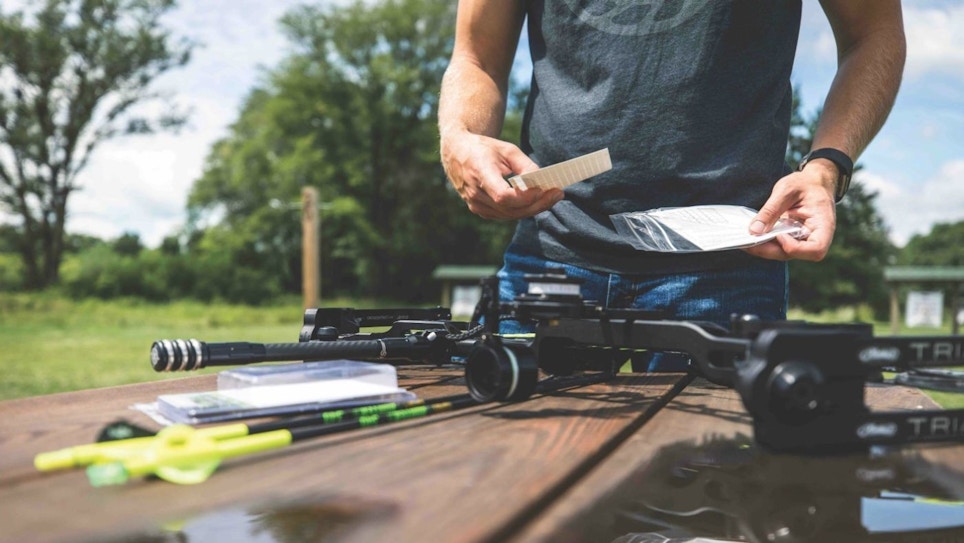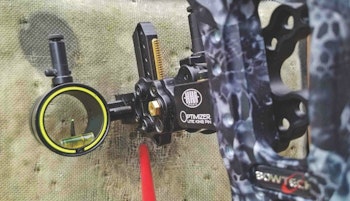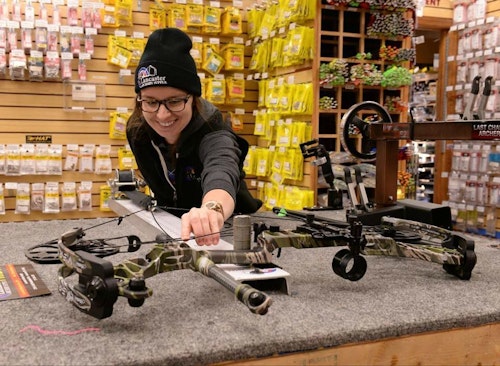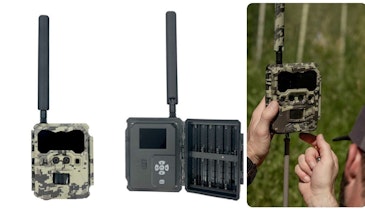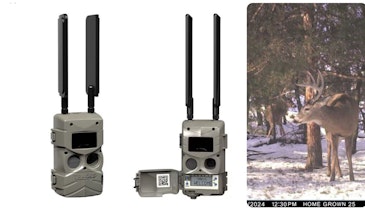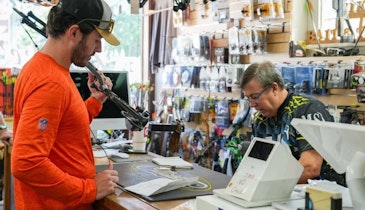As an avid bowhunter, taking on the role of a trained archery technician didn’t seem like much of a stretch — but stretch me it certainly did. I apprenticed with a well-respected technician who, I believe, taught me right. His paramount responsibility was to the customer, not the business, and those who called on his services knew it. As dynamics go, his approach was a boon for the business because word of mouth traveled quickly. Even better, when he moved on, he assured his loyal followers that they were in good hands, at least I hoped — mine.
From competitive shooters to bowhunters, customers trusted me to handle their bow and accessory needs, and the responsibility was never lost on me. At the same time, I also understood how important my role was in welcoming others into our archery heritage. Archers of various experience levels trusted my advice as an archery technician and often acted on my suggestions; again, a role I never took lightly. That said, and bows aside, helping customers choose bowsights was perhaps my most routine accessorizing activity.
To say choosing a bowsight is subjective seems like an understatement. People really are like snowflakes, every person is different and their likes and dislikes, seemingly as wide-ranging. Fortunately, bowsights are not as complex as people are, and even today’s complex devices simply capitalize on basic design elements; i.e. bracket, shooter ring, axis components for adjustability and pins. Not to oversimplify sights at all, but we aren’t discussing rocketships, either.
So then, in my technician days, bowsight selection generally began with purpose, and after talking to a handful of archery shops, it was nice to see that while bowsights have undergone many changes, prioritizing purpose when choosing the right sight has not. Consider what the following archery shops had to say about helping their customers choose the right bowsight.
Fort Grard Guns and Archery
Weatherford, Texas
When it comes to making a living outside the box, Randy Grard, co-owner of 5-star archery complex Fort Grard Guns and Archery, is a bit of a poster child. A walk in the door just might find Grard elbow-deep in a customer’s archery equipment with any manner of not-so-archery-common tools, but they work wonders in Randy’s expert hands. His tendency to use tools outside of the archery-norm, but perfect for his tasks prompted one customer ask what he did with the mouthwash on his workbench. Grard’s response? “I keep my breath fresh when talking to customers.”
The reality is that Grard’s approach is unique enough the customer felt he needed to ask. The amusing part is that Grard’s approach, while it appears outside the norm, is genuinely based on commonsense — and using the right tools for the job, whether they are called “archery tools” or not. Regardless of what is in his hands when he’s working on archery equipment, he’s a true master, and one is sure to learn a thing or two, or three, given the opportunity to simply watch him wrench on things a while.
His archery complex is just as unique, considering his array of traditional targets, steel challenge targets, swinging targets, long-range targets and floating ping-pong balls. And his approaches to routine or complex tech work result in second-to-none experiences.
Due largely to his experience and their own as visitors to Fort Grard, Randy’s loyal customers, target shooters and bowhunters alike at all experience levels, is significant and continually increasing. In fact, Grard set up my current bow, an Obsession Hemorrhage DE, and it’s shooting bullet holes through paper.
Grard’s success is quite evident in the location’s archery tech workload, which number in the thousands each year. This includes set ups, timing, tune-ups, repairs and accessorizing. For Randy and company, bowsight selection is a major consideration. Why? To hear Grard tell it — and it’s certainly true — while your bowsight can and often does enhance shooting, it is also most often the first go-to to correct a problem in another area. In effect, sight adjustments are made to mask or compensate for another problem area not addressed, such as poor centershot.
When it comes to helping a customer select the right bowsight, it comes as no surprise that purpose reigns supreme at Fort Grard. Is the archer using it for target shooting, hunting or maybe both? Randy also considers shooting ring size a critical element as it relates to the peep sight. This makes good sense because sight alignment is fundamental to accuracy. He also looks for a careful balance between budget and adjustability, again because the latter is often misused to compensate for poor bow setup.
Grard was also careful to point out short-yardage shooting as problematic, inclusive of the way sights may be misused. “Sighting in or shooting at 20 yards can be a bit of a problem when it comes to identifying problems because poor setup may not be as readily evident at such short distance,” said Grard. “The sight system becomes a slave to your bow’s setup, all the way down to inverting your sight bracket.”
When it comes to single- versus multi-pin sights, Grard has more advice. “Single-pin sights make you more conscious of correctly adjusting, forcing the shooter to pay close attention to distance. Conversely, multi-pin may facilitate more mistakes, depending on an archer’s experience level. Of course, Grard suggests multi-pin sights may present one other noteworthy issue. “Some of today’s bows are so fast that the first couple pins simply can’t be stacked that close together.”
Lancaster Archery Supply
Lancaster, Pennsylvania
Lancaster Archery Supply’s customer service and ProShop Techxpert, Dalton Renn, varies his take on bowsight selection slightly, by starting with the customer’s budget. To him, it makes little sense to suggest sights clearly out of a consumer’s budget. Honestly, I’ve seen some debate over price points in my own experiences as a bow shop customer, as well as an archery technician, and I always ask: What the heck can the customer afford? It makes no sense to try forcing someone into a consequential purchase — I don’t walk in their shoes.
A customer’s budget defined, Renn then focuses on application. Like Grard, Renn wants to know if they are shooting targets, whitetail deer, elk out West, or a little bit of all-of-the-above. Understanding intended applications helps Renn determine what type of sight is best.
However, before paring choices down, he also asks about eyesight. Problem vision may dictate one sight over another. As an example, a single-pin sight with a 2X magnifier lens (more on this setup in a bit). Eyesight may play a key role in whether a shooter uses a single- or multi-pin sight and pin diameter. By the time Renn’s questions have been answered, he’s narrowed options down to four or five sights and can explain the pros and cons for each. He leaves the final decision for his customer to make.
Of course, when I asked Renn what mattered to him when it came to selecting his current bowsight, he answered in detail. “I’m looking for two things. Can I see my pins, and does this sight have the amount adjustment I’m looking for? Shooting is fun and I enjoy shooting 80 or 90 yards. I like a sight that helps me get there, and I think practicing at greater distances makes that on-average 20-yard shot that much easier come hunting season.”
Renn also mentioned pin diameter as a factor. “I don’t have very good eyesight. I typically prefer a .019-inch pin because I know I can see that in low- or high-light situations. I also stay away from sights with more than three pins. They tend to blur together.”
Freedom Shooting Sports
Corsicana, Texas
Freedom Shooting Sports’ head of archery, Robert Dyess, and founder, Elliott Hillock, offer differing perspectives. From a technician’s perspective, Dyess’ bowsight selection process essentially begins like the others contributing to this feature — focusing on purpose. “Are they hunting, shooting tournaments or a combination of both?”
Dyess’ next step is to determine whether his customer should use a single- or multi-pin sight. “Fixed-pin sights work for most hunters, but some can get confused if there are multiple pins to contend with in a stressful situation. Of course, single-pin sights are a great choice if the archer can remember to adjust the sight for distance when needed.”
Dyess added, “Shooters and hunters launching most arrows at distances of 30 yards or closer can also benefit from focusing on just a single pin and, depending on sight features, can easily dial up for some long-yardage shots.” Like Dalton Renn, Dyess suggests customers with vision problems may be better suited to employ a single-point model to prevent blurring or starbursting of multiple pins.
Dyess goes a step further than fixed multi-pin and single-pin sights by suggesting an alternative: a multi-pin with adjustable options. With this type of sight, Dyess explained, “The customer can still have preset yardages but also adjust a pin in case the animal moves, requiring a quick distance adjustment.”
Final Thoughts
One of the best pieces of advice for Archery Business readers comes from the perspective of Freedom Shooting Sports Founder Elliott Hillock, and it's well worth considering. His response to my line of questioning was so spot-on, I have elected to share it below in its entirety — in a nutshell, I couldn’t have said it better.
There exist more variations in any given product category, in this case bowsights, than most stores have the ability or desire to shelve. The products that you will find in our store represent the intersection of, “What is the best possible product for our customer’s needs, that we would personally trust and like?” and “Where can we experience the best margin return on our inventory capital?”
We will not put on the shelf products that we feel are inferior simply because we garner more margin on the sale. The primary driver behind what we make available to the consumer is this: “Would we personally put this sight on our bow and field it to harvest an animal or compete to win a tournament?” If you wouldn’t use the product, you shouldn’t expect your staff to promote it with confidence. It’s our responsibility as retailers, especially archery pro shops, to properly equip the modern sportsman and to serve them as a trusted source of guidance. That said, margin and turn velocity matter. We have narrowed our product diversity to both “good” and “best” categories, each of which have multiple attributes (i.e. single pin, multi pin, simple adjustment, micro-adjustment, multi-axis leveling, etc.).
We have done away with the “better” category, in response to consumer behavior and sales data. It’s important that the products we sell carry high levels of margin, but as a consumer-oriented business it’s most important to keep in mind that our relationship of trust with our consumers takes precedence over profit.
Sidebar: 5 Questions to Ask Before Suggesting a Bowsight
- What will you use the sight for?
- What is your budget?
- If hunting, what is your primary strategy — spot-and-stalk, from a ground blind or elevated, night hunting?
- What is your experience level?
- Do you have any vision issues to consider?
Determine whether the purpose is for hunting, target shooting or both and the shooter’s experience level. Sights can be pretty purpose-oriented, especially when it comes to features like a single- or multi-pin design, micro-adjustability, multiple adjustment axis, internal rheostat illumination, etc. Experience can also help determine whether a shooter should use a single- or multi-pin sight. Of course, budget is also critical. It doesn’t make sense to suggest a $300 bowsight to someone with a budget of $100. Discussing any vision issues helps the tech and shooter alike determine if a single- or multi-pin is best and whether other accessories like magnifying lenses, sight lights or even lensed peeps should be considered to enhance shooting experiences.
